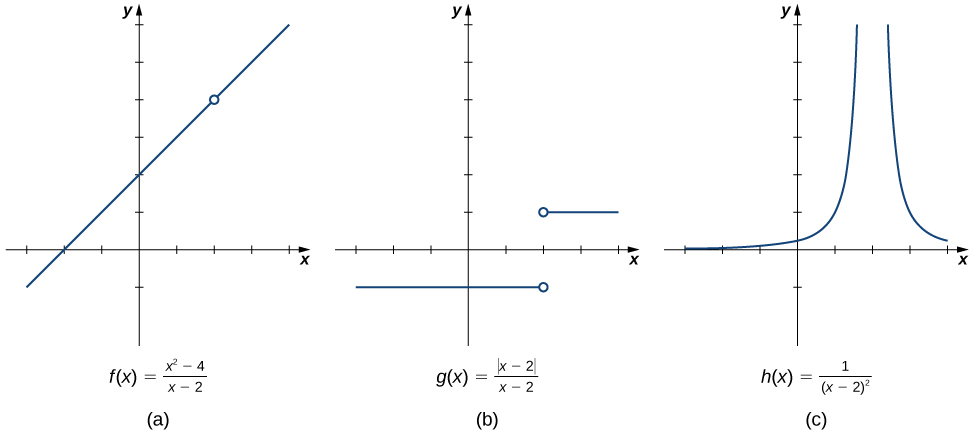| << Chapter < Page | Chapter >> Page > |
The concept of a limit or limiting process, essential to the understanding of calculus, has been around for thousands of years. In fact, early mathematicians used a limiting process to obtain better and better approximations of areas of circles. Yet, the formal definition of a limit—as we know and understand it today—did not appear until the late 19th century. We therefore begin our quest to understand limits, as our mathematical ancestors did, by using an intuitive approach. At the end of this chapter, armed with a conceptual understanding of limits, we examine the formal definition of a limit.
We begin our exploration of limits by taking a look at the graphs of the functions
which are shown in [link] . In particular, let’s focus our attention on the behavior of each graph at and around

Each of the three functions is undefined at but if we make this statement and no other, we give a very incomplete picture of how each function behaves in the vicinity of To express the behavior of each graph in the vicinity of 2 more completely, we need to introduce the concept of a limit.
Let’s first take a closer look at how the function behaves around in [link] . As the values of x approach 2 from either side of 2, the values of approach 4. Mathematically, we say that the limit of as x approaches 2 is 4. Symbolically, we express this limit as
From this very brief informal look at one limit, let’s start to develop an intuitive definition of the limit . We can think of the limit of a function at a number a as being the one real number L that the functional values approach as the x -values approach a, provided such a real number L exists. Stated more carefully, we have the following definition:
Let be a function defined at all values in an open interval containing a , with the possible exception of a itself, and let L be a real number. If all values of the function approach the real number L as the values of approach the number a , then we say that the limit of as x approaches a is L . (More succinct, as x gets closer to a , gets closer and stays close to L .) Symbolically, we express this idea as
We can estimate limits by constructing tables of functional values and by looking at their graphs. This process is described in the following Problem-Solving Strategy.
| x | x | |||
|---|---|---|---|---|
| Use additional values as necessary. | Use additional values as necessary. |

Notification Switch
Would you like to follow the 'Calculus volume 1' conversation and receive update notifications?